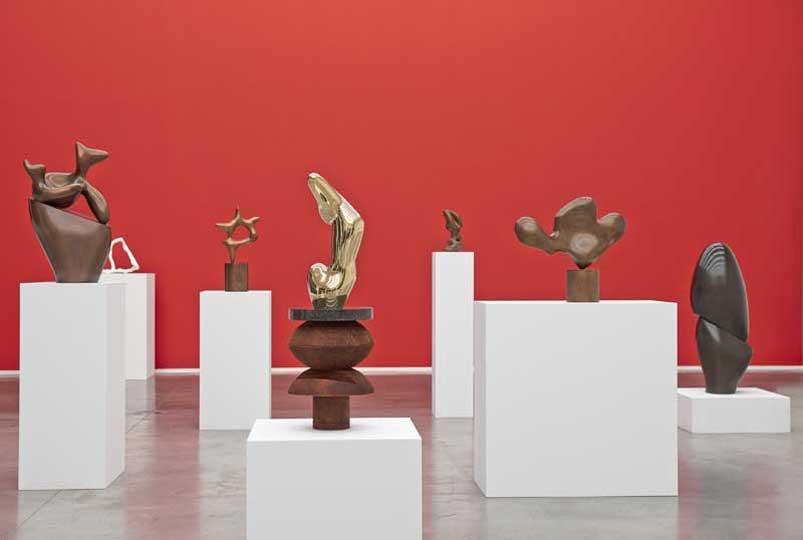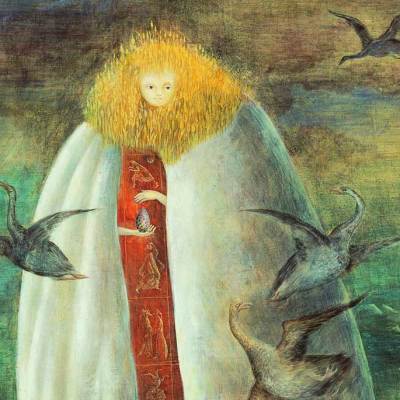‘Chance – Form – Language’ is a tight, neatly balanced show at Hauser & Wirth’s swish Savile Row gallery. It has been guest curated by Julian Heynen and focuses on the late sculptural work of Hans Arp – a pioneer of abstract art and one of the key founders of Dada in Zurich in 1916. On display are 20 sculptures, most of them never before seen outside of Switzerland, plus five Adaptives or Fitting Pieces by Franz West – an eccentric Austrian artist who deserves more attention than he tends to get.
Arp is a familiar figure of classical modernism well known for his mixed media pieces. In the late 1920s and early 1930s he began to develop a new way of working in sculpture. Arp started to create biomorphic pieces that combined artistic innovation with simplified, organic shapes. He used a quasi-automatic technique in which he would sand down a plaster model until a lucid, evocative form emerged. Arp was fascinated by the link between artistic creativity and the natural world – his sculptures combine classical traditions with organic shapes clearly influenced by nature.
The exhibition focuses on Arp’s late period from 1947 to 1965. The works on display vary in shape and size and are seemingly randomly arranged across a selection of boxy white plinths. The installation is dense with no obvious beginning or end, so it is tricky to know where to start or what to look at first. These days increasing numbers of private galleries seem to feel the need to mount ambitious curated shows – sometimes successful, sometimes overcomplicated – rather than simple showcases without the razzmatazz.
A certain lack of guidance, however, seems to be the point of this particular show. There is a sense of spontaneity to the whole exhibition, and it penetrates Arp’s work too. The sculptures are broadly figurative with fluid, swollen shapes that mirror the human body. They are dotted with sexual references and phallic forms. Yet, while Arp’s pieces are meticulous and highly accomplished, they also address the notion of chance. Intuition played a key role in Arp’s creative process and it is his ability to combine clear, calculated forms with shapes that are impulsive and unconstrained that makes his work so unusual. His solid interlocked shapes create a unique visual vocabulary.
The 20 sculptures are in bronze, marble and aluminium. Ptolemy II (1958) is a great example of Arp’s ability to bring together two visual worlds. It is a beautiful piece that has a distinct sensual language. Full of weight and physicality, it is somehow bold and confident, soft and tender all at once. Like all of Arp’s late works, it has a wonderful and natural sense of freedom that is difficult to achieve in sculpture.
A selection of Arp’s poetry is printed on one wall of the gallery, and recordings in both English and German play at regular intervals throughout. Then there are the five installations by Franz West, all of which encourage audience interaction. Diwan (1999), is a handmade sofa positioned at the back of the gallery that invites visitors to sit down and contemplate the space. West’s pieces, like Arp’s, are ambiguous, semi-organic forms, always evolving and taking on new meanings. ‘These sculptures,’ says Heynen, ‘are meant to be used by viewers in combination with their own bodies as instruments for self-exploration.’ Go and try it.
‘Chance – Form – Language’ is at Hauser & Wirth, Savile Row, London, until 1 March.
Related Reviews:
Well Cut: Dada artist Hannah Höch at the Whitechapel Gallery
Late Sculptures by Giorgio de Chirico at the Estorick Collection








